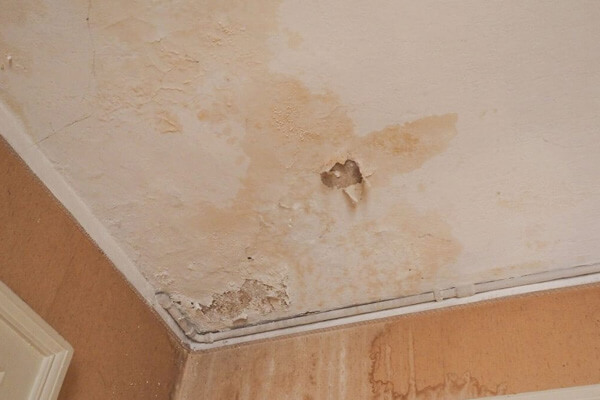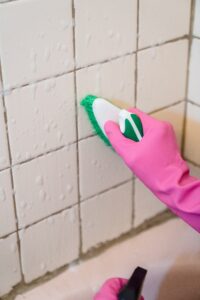Water Stains on Walls: Examining and Addressing Strategies
Water Stains on Walls: Examining and Addressing Strategies
Blog Article
Everyone seems to have their own way of thinking involving Water Stains on Walls.

Water stains on walls are not positive to the eyes. Your home needs to lack stains on the walls, roof covering, or floors. That is the perfect state of a house as well as its frameworks. In some cases it appears virtually inevitable to experience water discolorations on wall surfaces in houses.
House owners living in humid areas frequently deal with the concern of water stains on walls. With all-round and also accurate information on the reasons of water stains as well as timely repair procedures, you will certainly constantly be a step ahead of such incidents.
3 Usual Sources Of Water Spots on Wall Surfaces
Unlike common belief, water discolorations on walls do not constantly stem from bad structure products. There are several root causes of water stains on walls. These include:
Poor Drain
When making a structure strategy, it is important to make certain appropriate drain. This will certainly avoid water from leaking into the wall surfaces. Where the water drainage system is blocked or nonexistent, underground wetness builds up. This links to excessive wetness that you notice on the walls of your structure.
So, the leading root cause of damp wall surfaces, in this instance, can be an inadequate water drainage system. It can additionally result from poor monitoring of sewer pipelines that go through the structure.
Moist
When warm moist air meets completely dry chilly air, it creates water droplets to form on the wall surfaces of buildings. This happens in bathrooms and kitchens when there is vapor from food preparation or showers. The water droplets can stain the bordering walls in these parts of your residence as well as spread to various other locations.
Moist or condensation influences the roofing and wall surfaces of structures. When the wall surface is wet, it develops a suitable setting for the growth of microbes and also fungi.
Pipe Leaks
A lot of homes have a network of water pipes within the wall surfaces. This guarantees that the pipes are faraway from the reach of destructive rodents. It always raises the feasibility of such pipelines, as there is little oxygen within the wall surfaces. This dissuades rust.
Yet, a disadvantage to this is that water leak affects the wall surfaces of the structure and creates extensive damage. A dead giveaway of defective pipes is the appearance of a water discolor on the wall surface.
Water Spots on Wall: Repair Work Tips
Property owners would normally desire a quick fix when handling water spots. They would certainly quickly recognize this is counterproductive as the water discolorations persist. So, right here are a few useful pointers that will certainly assist you in the fixing of water spots on walls:
Pro Tip
A houseplant in your house additionally boosts its moisture. If the home is currently damp, you may desire to present houseplants with marginal transpiration. An example of suitable houseplants is succulents.
Verdict
Although no person wishes to have water stains on walls in their residence, it can happen to the most effective people. This short article offers you leverage, as you currently know exactly how to handle this mishap if it does happen.
It is constantly best to recruit specialist services to aid repair the problems in your home.
Occasionally it appears practically inescapable to experience water stains on wall surfaces in residences.
Contrary to preferred belief, water spots on walls do not always stem from inadequate building materials. There are numerous causes of water spots on wall surfaces. The water droplets can tarnish the bordering walls in these components of your residence and spread to various other locations.
Below are a couple of practical tips that will guide you in the repair work of water discolorations on wall surfaces:
CHECKING FOR WATER DAMAGE
Water damage can be costly, and it may begin before you even notice the first signs of trouble. Water damage can cause mold and mildew in your walls and floors, which can create an abundance of health concerns for your family. It can also lead to costly repairs of various appliances and general home fixtures. To avoid the pricey consequences of water damage, here are Warner Service’s top 5 places you should check:
The walls – The easiest place to spot the beginnings of water damage is on the walls and ceilings of your home. If water damage is present, there will most likely be water stains, especially around the windows and doorframes, and/or cracks in the drywall. If a stain looks unusual (discolored to brown, black or gray, raised texture), has a swollen appearance or is soft to the touch, contact a professional immediately. The pipes – To avoid water damage, consistently check the pipes in your kitchen (especially the dishwasher and ice maker), bathrooms, laundry room (specifically washing machines) and basement for corrosion, leaks and water stains. Pay special attention to where the pipes connect in your home and the location of caulking around the bathroom fixtures, including toilets, sinks, showers and tubs. Missing or loose caulking and grout could be signs of leaking water. This seepage can also quickly cause mold and rust, so double check your water heater and tank for wet spots on the floor. The floor – Water damage is very easy to spot on the floor. Look for any warping or buckling of the material, especially in the basement. If your home has wood flooring, look for bright white or dark stains. If your home has carpeting, keep it dry and clean. A damp carpet that smells of mold could cause water damage and health problems. To avoid this, consider installing floor pans under your appliances to help prevent damages from small, slow and undetected leaks. The basement and attic – If your basement or attic smells odd check for mold and mildew around the area, especially the valley where the roof meets. While you are inspecting those areas, check for wall cracks, floor stains, rust and dampness in the insulation. If you live in a colder and/or rainier climate, perform routine checks for water damage from melting snow or ice and rain. The exterior – Check the roof for damaged flashing and missing, cracked or curled shingles. There should also be no standing water anywhere outside your home. This could be caused by puddles, leaky rain gutters or hoses, poor drainage, or short gutter spouts. Invest in a sump pump system or water flow monitoring system, and perform routine maintenance on these outdoor appliances to avoid indoor water damage.

As an avid person who reads about Water Stains on Walls, I figured sharing that article post was worthwhile. Don't hesitate to take the opportunity to share this blog post if you liked it. Kudos for your time. Please pay a visit to our site back soon.
Top plumbers, one call. Report this page